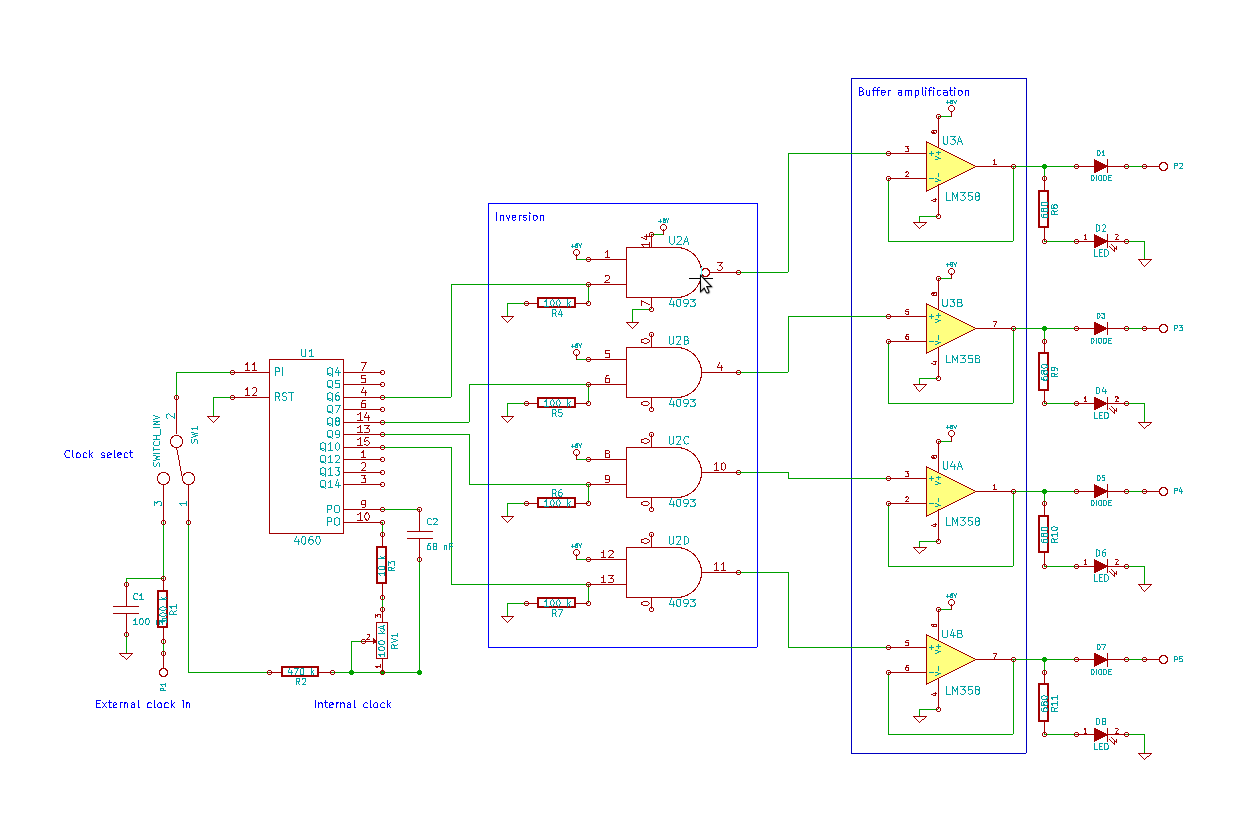
Siren uses TTL gates

The siren comprises two oscillators that generate tones. A third oscillator is utilized to alternately switch the others on and off, creating a two-tone effect. By adjusting the capacitor values, different tones can be produced.
The siren circuit is designed to produce a distinctive sound through the interaction of multiple oscillators. The primary components include two tone-generating oscillators, typically configured as astable multivibrators or similar oscillator circuits, which operate at different frequencies. The output of these oscillators is fed into a speaker or a piezoelectric transducer to create audible sound.
The third oscillator serves a crucial role in modulating the output of the first two. This oscillator can be configured as a simple square wave generator, which toggles the activation of the two tone generators. By controlling the duty cycle and frequency of this third oscillator, the timing of the on and off states of the first two oscillators can be finely adjusted, allowing for a variety of two-tone patterns.
Capacitor values in the circuit are significant because they influence the timing characteristics of the oscillators. By selecting different capacitor values, the frequency of oscillation can be altered, resulting in different tonal outputs. This allows for customization of the siren's sound, making it adaptable for various applications, such as alarms, alerts, or signaling devices.
In designing the circuit, it is essential to ensure that the power supply is stable and capable of providing the necessary current for the oscillators and the output device. Additionally, proper filtering may be required to minimize noise and ensure clear tone generation. The implementation of resistors in conjunction with the capacitors will also affect the rise and fall times of the oscillators, further shaping the sound produced by the siren.
Overall, the siren circuit's versatility and simplicity make it an effective tool for generating attention-grabbing alert signals in numerous electronic applications.The siren consists of two oscillators which generate the tones. A third oscillator is used to switch the others on and off alternately, giving the two-tone effect. By changing the capacitor values different tones can be produced. 🔗 External reference
The siren circuit is designed to produce a distinctive sound through the interaction of multiple oscillators. The primary components include two tone-generating oscillators, typically configured as astable multivibrators or similar oscillator circuits, which operate at different frequencies. The output of these oscillators is fed into a speaker or a piezoelectric transducer to create audible sound.
The third oscillator serves a crucial role in modulating the output of the first two. This oscillator can be configured as a simple square wave generator, which toggles the activation of the two tone generators. By controlling the duty cycle and frequency of this third oscillator, the timing of the on and off states of the first two oscillators can be finely adjusted, allowing for a variety of two-tone patterns.
Capacitor values in the circuit are significant because they influence the timing characteristics of the oscillators. By selecting different capacitor values, the frequency of oscillation can be altered, resulting in different tonal outputs. This allows for customization of the siren's sound, making it adaptable for various applications, such as alarms, alerts, or signaling devices.
In designing the circuit, it is essential to ensure that the power supply is stable and capable of providing the necessary current for the oscillators and the output device. Additionally, proper filtering may be required to minimize noise and ensure clear tone generation. The implementation of resistors in conjunction with the capacitors will also affect the rise and fall times of the oscillators, further shaping the sound produced by the siren.
Overall, the siren circuit's versatility and simplicity make it an effective tool for generating attention-grabbing alert signals in numerous electronic applications.The siren consists of two oscillators which generate the tones. A third oscillator is used to switch the others on and off alternately, giving the two-tone effect. By changing the capacitor values different tones can be produced. 🔗 External reference





